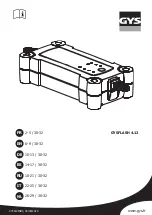
−
Each tire, including the spare (if
provided), should be checked
monthly when cold and inflated to
the inflation pressure recommended
by the vehicle manufacturer on the
vehicle placard or tire inflation
pressure label.
(If your vehicle has tires of a
different size than the size indicated
on the vehicle placard or tire
inflation pressure label, you should
determine the proper tire inflation
pressure for those tires.)
As an added safety feature,
your vehicle has been
equipped with a tire
pressure monitoring system (TPMS)
that illuminates a low tire pressure
telltale when one or more of your
tires is significantly under-inflated.
Accordingly, when the low tire
pressure telltale illuminates, you
should stop and check your tires as
soon as possible, and inflate them to
the proper pressure.
Driving on a significantly under-
inflated tire causes the tire to
overheat and can lead to tire failure.
Under-inflation also reduces fuel
efficiency and tire tread life, and may
affect the vehicle’s handling and
stopping ability.
Please note that the TPMS is not a
substitute for proper tire
maintenance, and it is the driver’s
responsibility to maintain correct tire
pressure, even if under-inflation has
not reached the level to trigger
illumination of the TPMS low tire
pressure telltale.
CONTINUED
Tire Pressure Monitoring System (TPMS)
Required Federal Explanation
T
e
chnical
Inf
or
mat
ion
587
10/07/29 12:57:24 31TK4620_592
2011 TL
Summary of Contents for 2011 TL
Page 63: ...60 10 07 29 11 47 24 31TK4620_065 2011 TL ...
Page 445: ...442 10 07 29 12 38 37 31TK4620_447 2011 TL ...
Page 497: ...494 10 07 29 12 45 20 31TK4620_499 2011 TL ...
Page 549: ...546 10 07 29 12 52 05 31TK4620_551 2011 TL ...
Page 579: ...576 10 07 29 12 55 46 31TK4620_581 2011 TL ...
















































